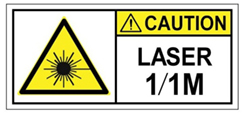About the Cisco NCS 4009 Chassis
The following cards are supported in the Cisco NCS 4009 chassis:
- 2 slots for route processor cards (RPs)
- 9 slots for line cards (LCs)
- 4 slots for fabric cards (FCs)
The Cisco NCS 4009 chassis is rack mountable. It is compatible with the following standard rail spacing:
- ANSI 19-inch or 23-inch
- ETSI
 Note |
For the ANSI 19-inch rack, the minimum front opening must be 17.72 inches (450 mm) to allow for chassis insertion.The installation kit includes different brackets for each type of rack. |
The Cisco NCS 4009 chassis contains its own power and cooling systems. Power systems are available using AC or DC power. A fan tray is located in the top slot of the chassis.
 Note |
The installation of a Cisco NCS 4009 chassis may require space, power, and cooling modifications to a facility. Therefore, you should plan the site well in advance of the scheduled delivery of the chassis system. |

|
1 |
Power trays (2) |
4 |
Fiber management |
|
2 |
External Connection Unit (ECU)/Craft Panel/Air Outlet |
5 |
Card cage containing:
|
|
3 |
Fan tray |
6 |
4 fabric card slots covered by the inlet air filter |

 Note |
There is an air outlet on the top of chassis below the bottom power tray. |










 Feedback
Feedback